Libraries are more than quiet spaces for reading—they are dynamic canvases that come alive with the expressive energy of art. The melding of literature and visual storytelling in murals creates immersive experiences that celebrate history, culture, and community spirit. Each library mural speaks of local heritage in vibrant colors and designs that inspire and educate, inviting both young and old to explore a world of imagination. Dive into the rich tapestry of creative narratives and cultural expression found in 22 Library Murals.

1. Revitalizing Community Identity
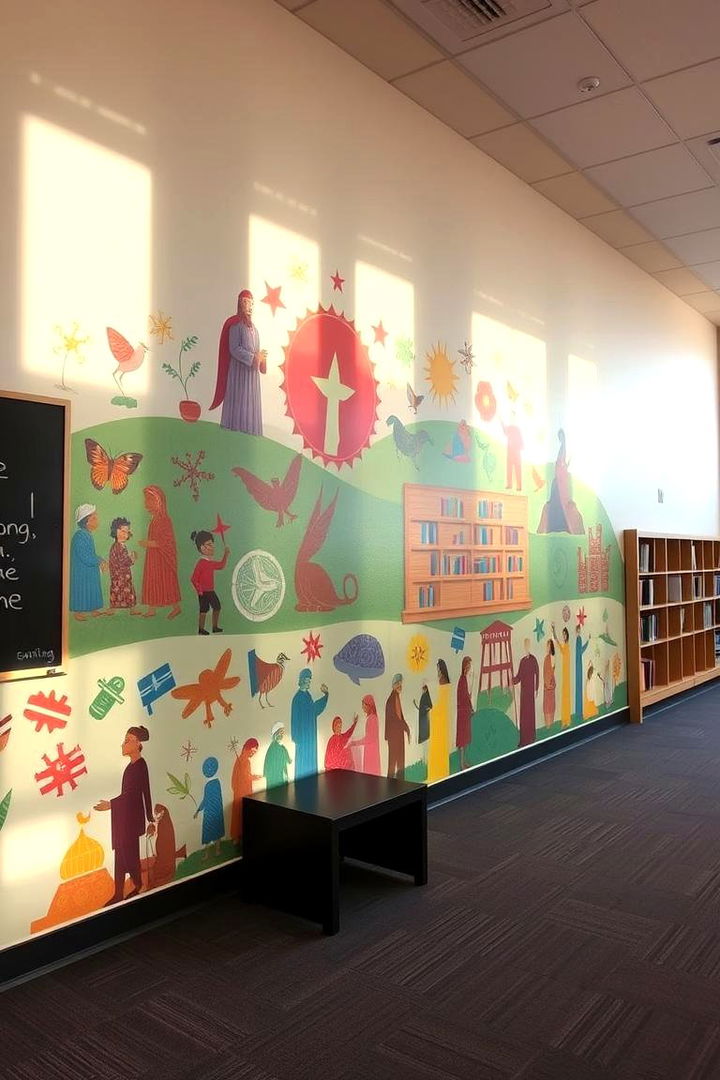
A vibrant blend of art and community spirit awaits in library murals that breathe life into local spaces. These murals serve as catalysts for community engagement, fostering an environment where residents connect with their history and culture. With bold designs and expressive imagery, they transform ordinary library walls into inspiring landmarks. Celebrating local icons and traditions, these works of art invite viewers to rediscover their roots while igniting community pride. Moreover, they provide safe spaces for dialogue, uniting individuals from diverse backgrounds through a shared sense of identity and belonging.
2. Celebrating Literary Heritage
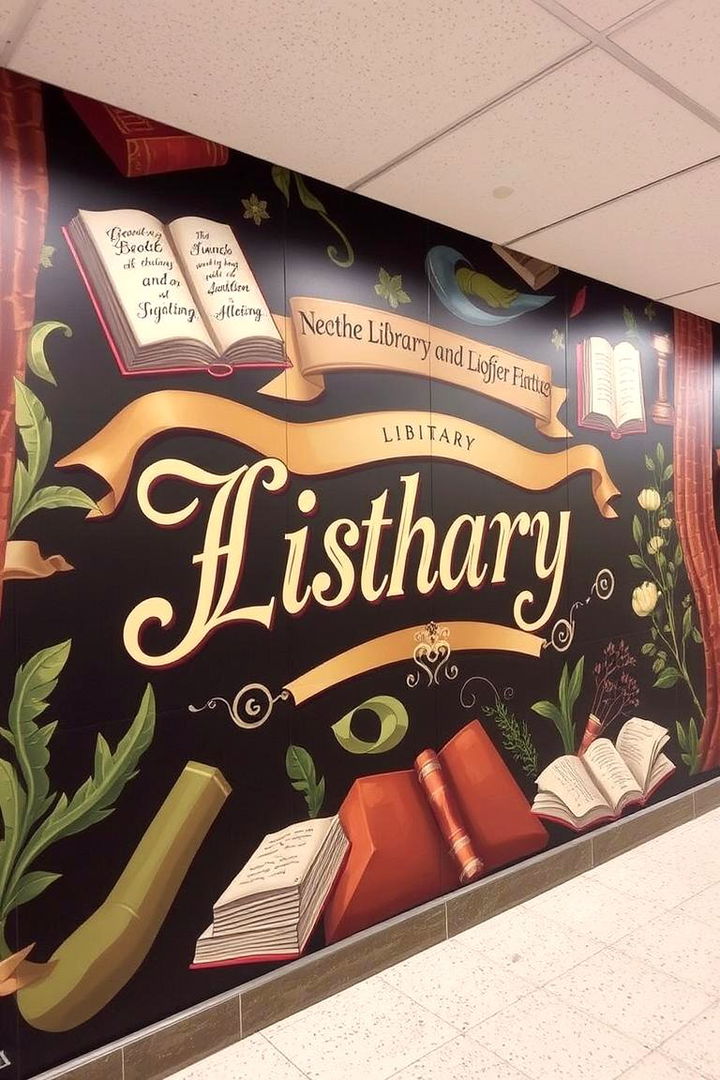
The beauty of literary heritage shines through murals that honor the timeless art of storytelling. These artistic renditions capture the essence of classic literature and celebrated authors using rich color palettes and intricate details. By framing iconic scenes and famous quotes, the murals inspire readers to explore deeper narratives. They serve as a bridge between the printed word and visual art, making literature accessible and engaging to all ages. Celebrating literary heritage in these public spaces encourages dialogue about history, culture, and the power of the written word in our lives.
3. Integrating Local History
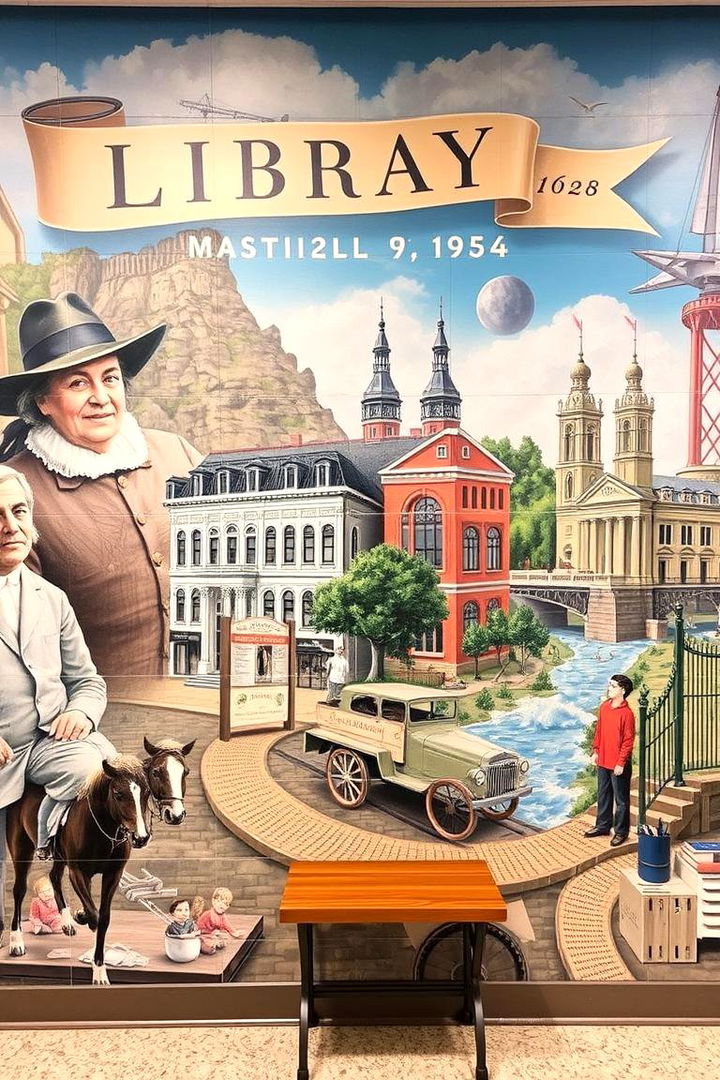
This thoughtful integration of local history into library murals not only adorns walls with art but also weaves historical narratives into daily life. By depicting iconic landmarks, historical figures, and key moments from the past, the murals educate viewers subtly while beautifying the space. They capture the evolution of a community, highlighting struggles and triumphs in a visually compelling manner. As patrons walk past these murals, they feel a deep connection to the struggles and achievements of previous generations, fostering a sense of respect, empathy, and pride in their shared heritage.
4. Emphasizing Diversity in Art
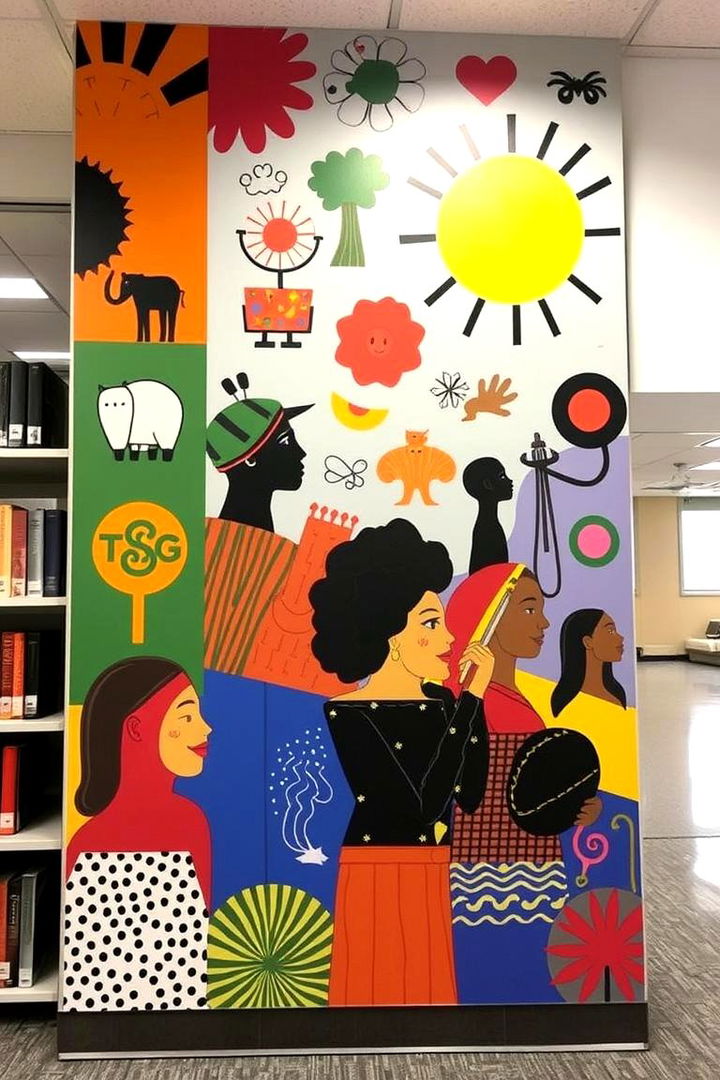
Looking at the diverse range of motifs in library murals invites audiences into a colorful dialogue about inclusivity and representation. These art installations incorporate multiple cultural symbols, languages, and artistic traditions that mirror the community’s multifaceted identity. Reflection of globally inspired scenes and abstract designs encourages viewers to embrace differences and celebrate varied perspectives. Beyond mere decoration, these murals act as visual narratives that promote social harmony and cross-cultural understanding, making art a powerful catalyst for unity and creative expression in every public space.
5. Inspiring Imagination and Learning
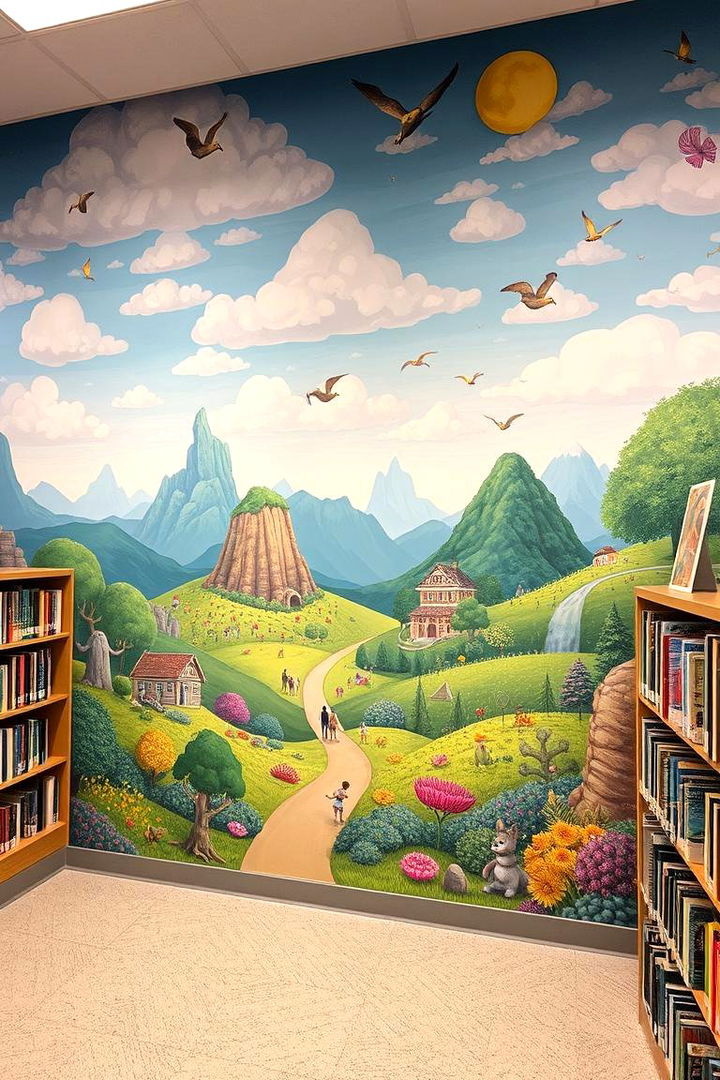
What sparks imagination more than walking into a library illuminated by expansive murals? These visual masterpieces are designed to ignite creativity and encourage intellectual exploration. They capture imaginative scenes that transport viewers into dreamlike worlds where stories unfold in each brush stroke. As the murals merge colorful imagery with symbolic references, they create an environment that nurtures curiosity and learning. Teachers, students, and visitors alike gain motivation to explore new ideas and perspectives, ultimately making the library a hub for creative inquiry and thoughtful reflection.
6. Enhancing Interior Aesthetics
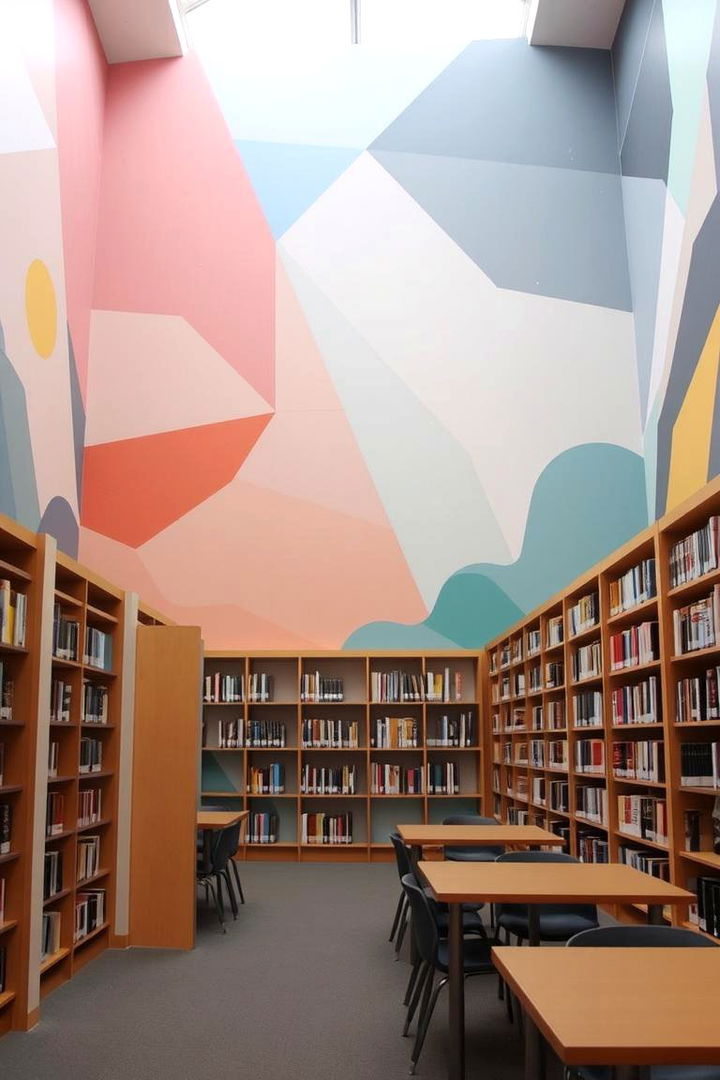
By transforming library interiors with creative murals, these spaces become galleries of art that uplift moods and stimulate minds. The carefully curated designs add an artistic flair that enhances both functionality and comfort. Soft hues paired with striking contrasts create an inviting atmosphere that encourages quiet reflection and productive study sessions. Patrons experience an environment that is both aesthetically pleasing and intellectually stimulating, all while the murals tell silent stories of art and imagination. These visually appealing backdrops also serve to reduce stress and invite creative thinking in daily interactions.
7. Incorporating Interactive Elements
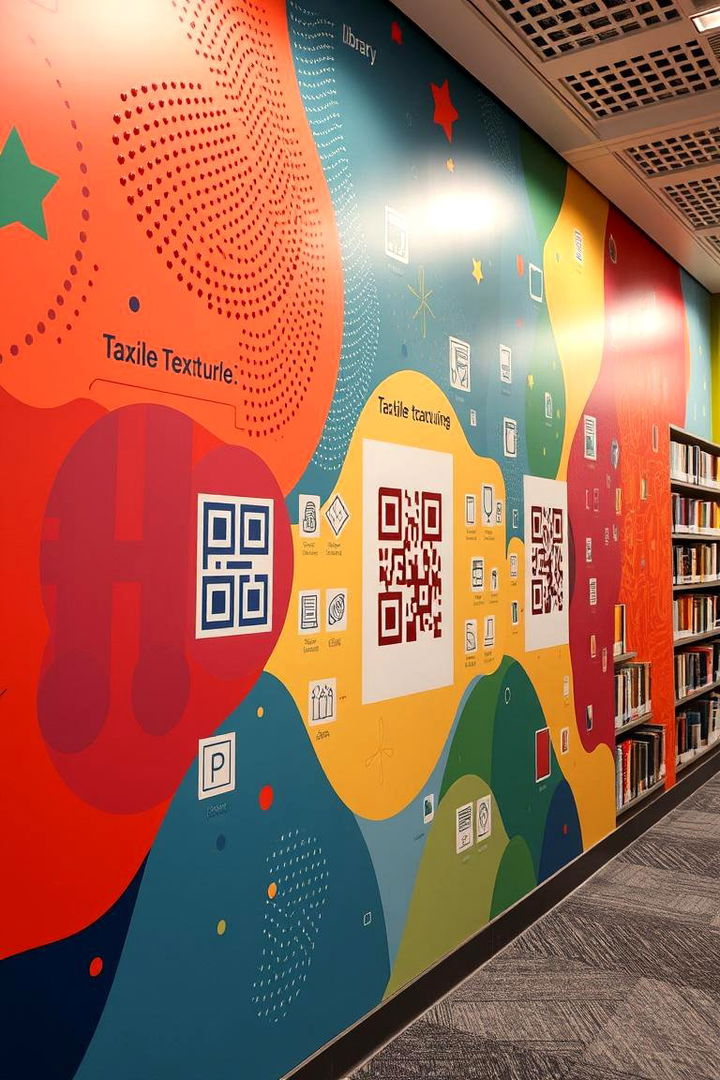
At times, interactive elements embedded in library murals invite viewers to become part of the art themselves. Touch-sensitive components, QR codes with audio descriptions, or hidden details to discover transform a static mural into a dynamic experience. These engaging features encourage visitors to explore every angle and become active participants in the artistic narrative. By merging technology or tactile elements with traditional painting techniques, such murals enhance user experience, making art accessible, educational, and fun. This innovative approach redefines how libraries foster interactive learning and community participation.
8. Bridging Past and Present
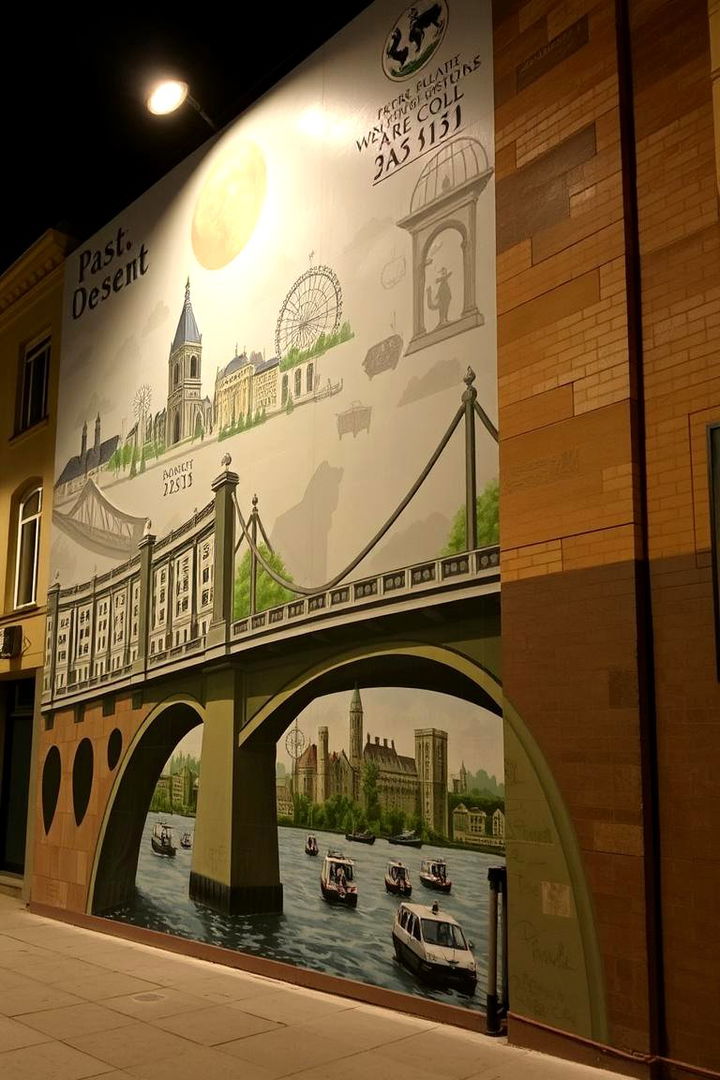
By elegantly bridging past and present, library murals combine historical motifs with modern artistic techniques to create a cultural dialogue. They seamlessly weave traditional narratives with contemporary styles, offering an inclusive storytelling platform. Vibrant brush strokes mingle with subtle imagery of bygone eras, encouraging viewers to reflect on historical milestones and current trends alike. This blend of old and new creates an enriched experience that honors antecedents while embracing innovation. Patrons are invited to explore this unique visual journey, feeling a continuous link between heritage and modern creativity.
9. Storytelling Through Murals
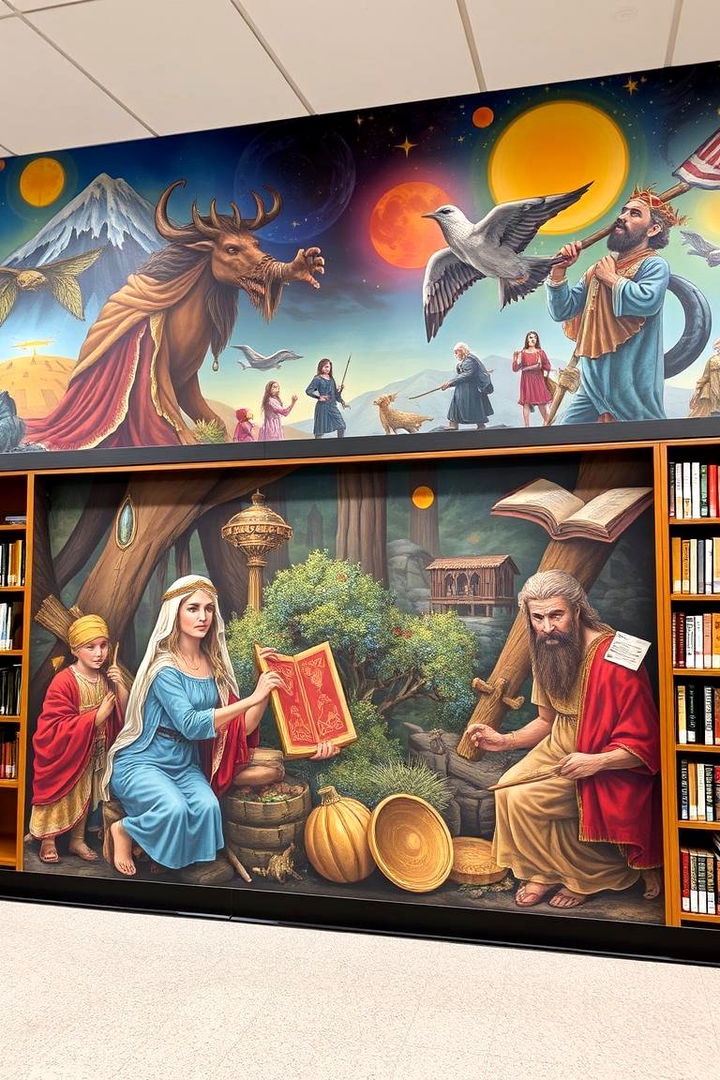
Surprisingly, the art of mural painting transforms library walls into vibrant storybooks without words. Each detailed scene captures a narrative, inviting viewers to interpret its layers of meaning. Symbolic imagery and dynamic figures often illustrate well-known fables, cultural legends, or even local myths. This visual storytelling not only perpetuates the tradition of oral and literary narratives but also engages the audience in personal reflection and conversation. The murals become both a source of inspiration and a silent teacher, drawing everyone into a shared adventure of creativity and cultural exploration that enriches both mind and spirit.
10. Inviting Collaborative Art
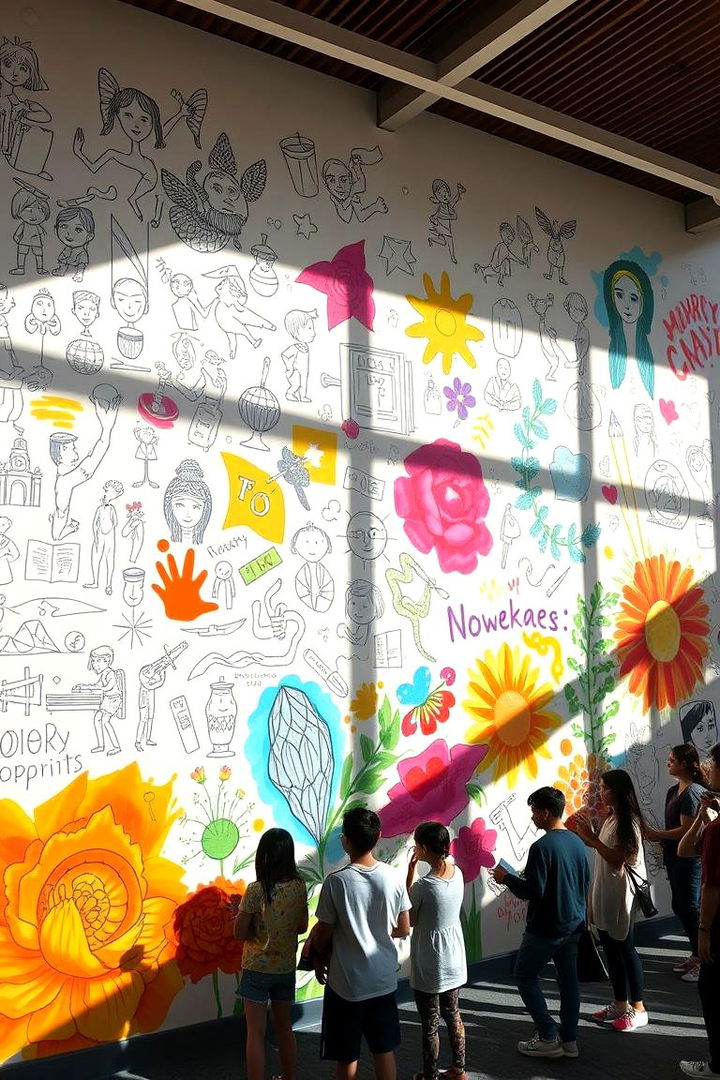
By encouraging collaborative art projects, library murals open opportunities for community participation. Local artists, students, and residents often join forces to design and execute these creative projects, ensuring a rich mosaic of perspectives. The process of collective creation strengthens community bonds and nurtures artistic talents. Workshops and open forum sessions allow participants to share ideas and techniques, fostering an environment of learning and mutual appreciation. Such collaborative efforts not only enhance the visual appeal of libraries but also foster a sense of ownership and pride among the community members, creating art that truly belongs to everyone.
11. Preserving Cultural Narratives
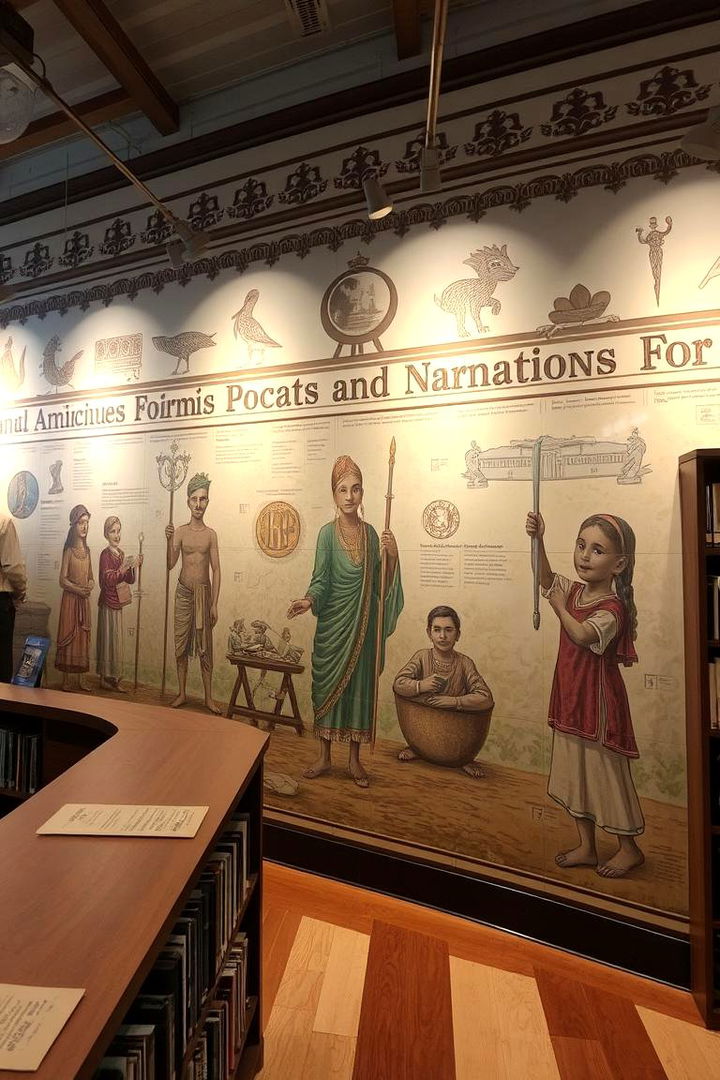
Incorporating elements that preserve cultural narratives, these murals serve as a living record of a community’s multifaceted heritage. Detailed illustrations and symbolic imagery capture and reflect local customs, traditions, and folklore. They offer viewers a glimpse into the rich tapestry of history that might otherwise be forgotten. Each mural is thoughtfully designed to encapsulate stories passed down through generations, ensuring that the legacy of the community remains vibrant. The integration of historical symbols and indigenous motifs makes each artwork a treasured cultural archive, preserving memories and traditions for future generations.
12. Stimulating Public Discourse
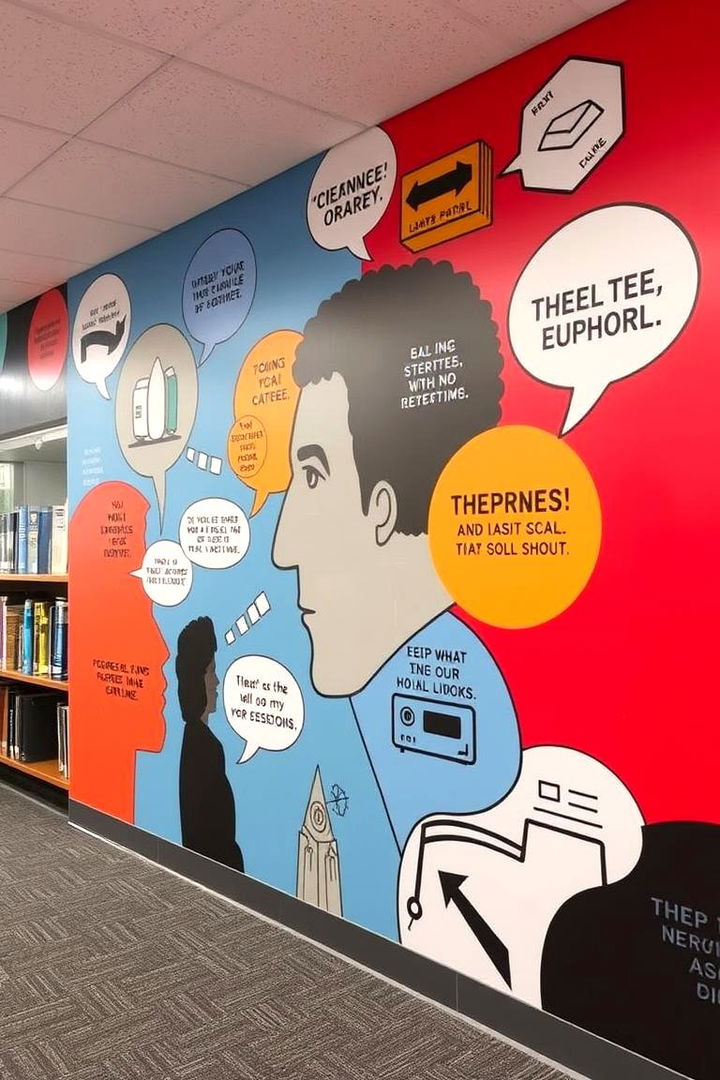
At times, library murals function as thought-provoking canvases that stimulate public discourse on societal themes and contemporary issues. Bold artistic expressions imbued with powerful symbols invite viewers to reflect on topics like social justice, environmental challenges, and community resilience. As residents engage with these suggestions and encourage dialogue, the murals become platforms for deeper understanding and civic discussion. Their presence in public spaces ensures that art is not confined to aesthetics alone but serves as a catalyst for inevitable conversations that propel personal and collective growth in an ever-evolving society.
13. Transforming Public Spaces
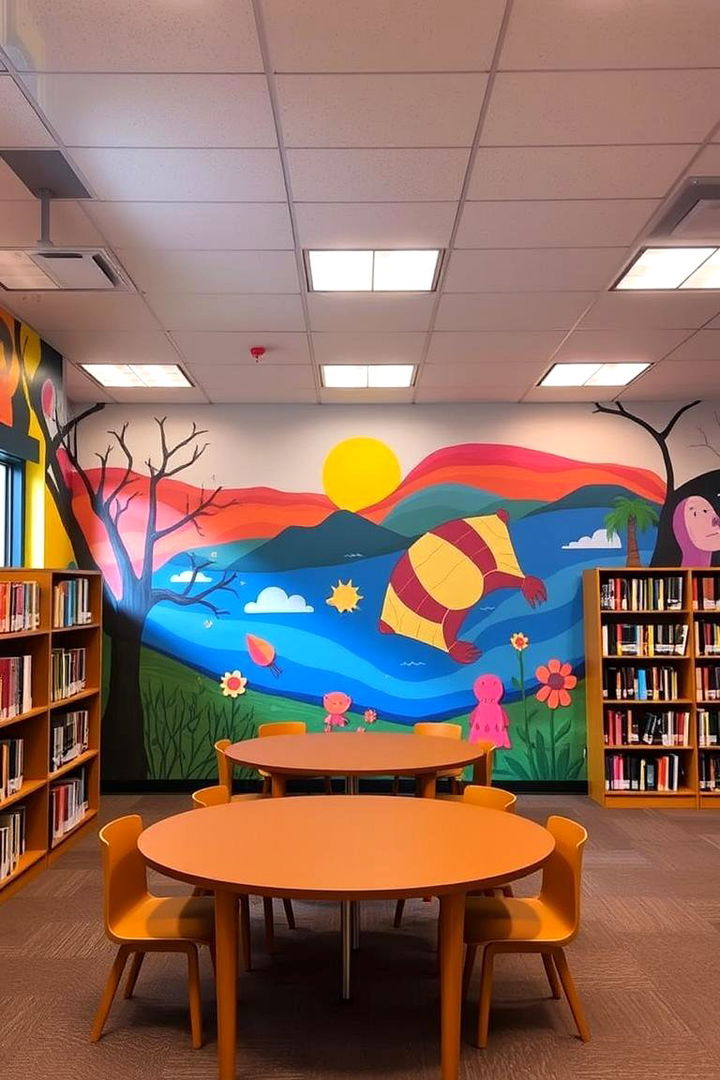
To witness a transformation in public spaces, one only needs to step inside a library adorned with vibrant murals. These art pieces redefine everyday locations, turning quiet corners into dynamic galleries that celebrate cultural heritage and creativity. The vivid imagery and thoughtful designs breathe energy into the environment, inspiring both reflection and newfound appreciation for public art. By converting mundane walls into canvases of storytelling and visual poetry, libraries not only enhance their aesthetic appeal but also create inviting spaces that encourage exploration, conversation, and community engagement at every turn.
14. Blending Modern and Traditional Art
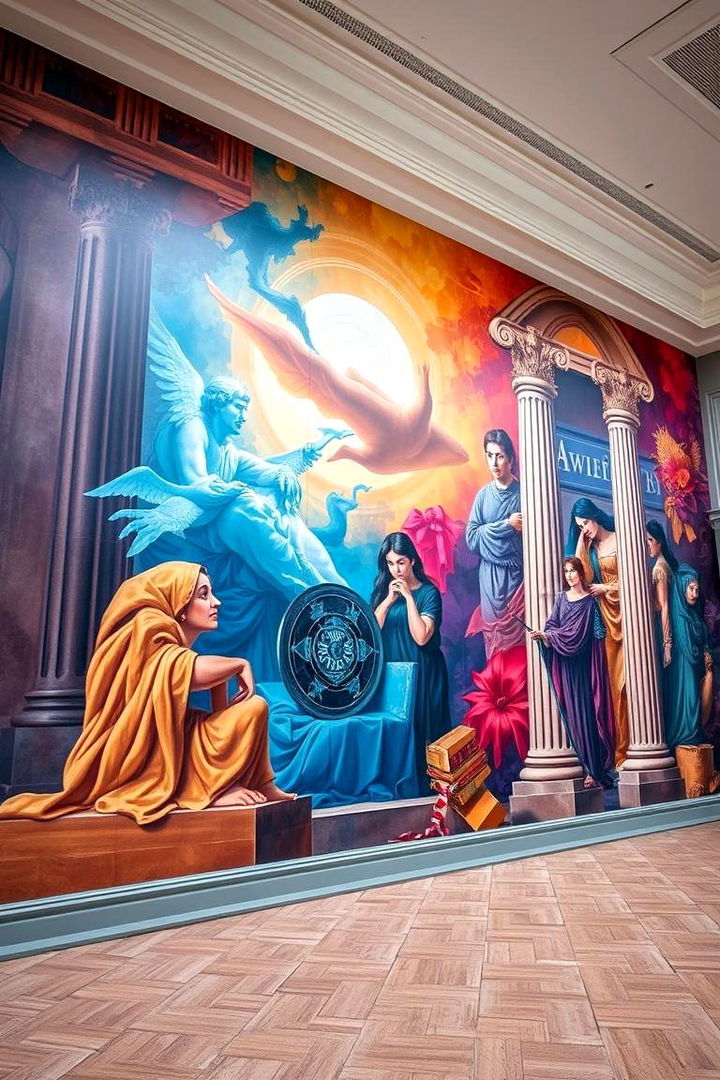
By blending modern techniques with traditional art forms, library murals offer a compelling visual narrative that honors the past while embracing innovation. The harmonious use of contemporary colors, digital effects, and classical painting styles creates unique artistic statements. This fusion of eras allows viewers to appreciate the evolution of artistic expression while remaining connected to time-honored traditions. Each mural is a testament to the endless possibilities when heritage meets modern creativity. Such a blend enriches the space, providing an engaging dialogue between the old and the new that inspires both curiosity and admiration.
15. Engaging School Partnerships
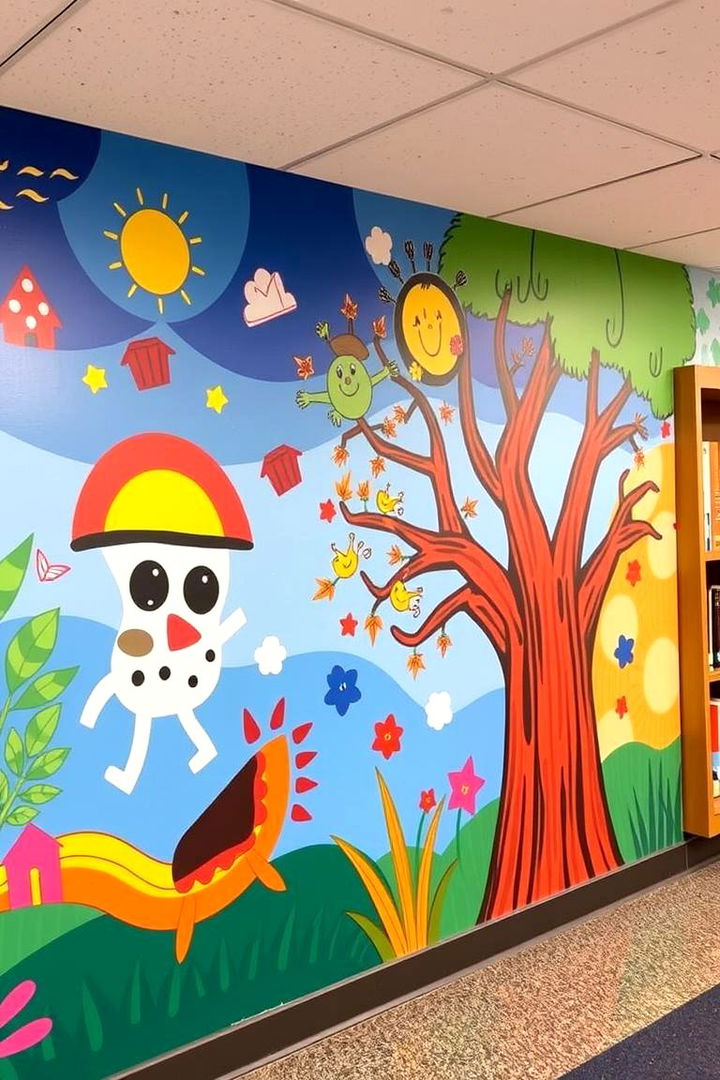
Consider the impact of engaging school partnerships to create collaborative library murals that spark the imagination of young minds. These projects often involve art students and local educators, inviting youthful creativity into public spaces. Such partnerships offer hands-on learning opportunities, teaching children about the artistic process, cultural history, and teamwork. The murals not only become colorful displays of local talent but also serve as educational tools that relate complex themes in an approachable manner. Through these collaborative ventures, libraries become vital community hubs where education, creativity, and art unite to inspire the next generation.
16. Promoting Creative Workshops
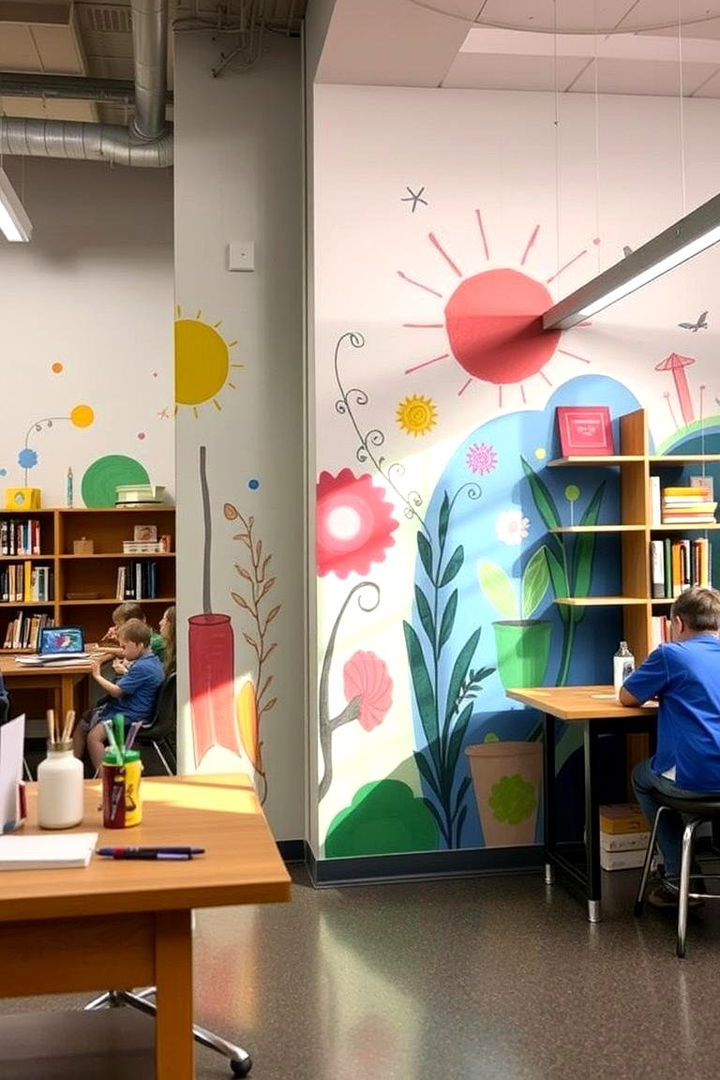
With a focus on continued learning, many library murals are accompanied by creative workshops and community events. These sessions invite participants to learn painting techniques, explore creative storytelling, and delve into the cultural significance behind the artworks. By offering hands-on experiences and expert guidance, libraries foster an environment where creativity flourishes. Participants of all ages can learn new artistic skills and appreciate various art forms while building lasting community bonds. The workshops enhance the murals’ impact, transforming them from static displays into interactive experiences that stimulate lifelong learning and artistic growth.
17. Reflecting Urban Landscapes
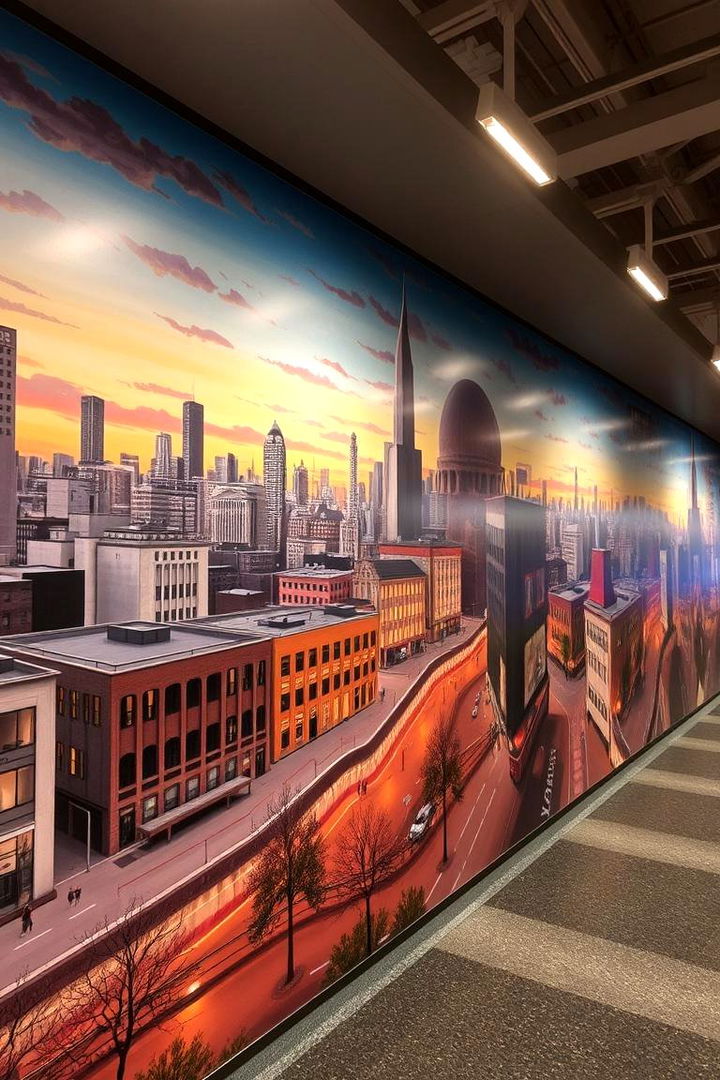
In urban settings, library murals provide a reflective perspective on city life, combining dynamic street scenes with thoughtful artistic expressions. Detailed imagery showcasing bustling streets, modern architecture, and green spaces invites viewers to explore urban transformation. These murals capture the heartbeat of the city, revealing both its challenges and its creative potential. The interplay of shadows, light, and vibrant hues creates a striking visual representation that mirrors the energy of urban living. Moreover, they serve as cultural landmarks, transforming everyday cityscapes into opportunities for reflection, dialogue, and pride in local developments.
18. Encouraging Civic Pride
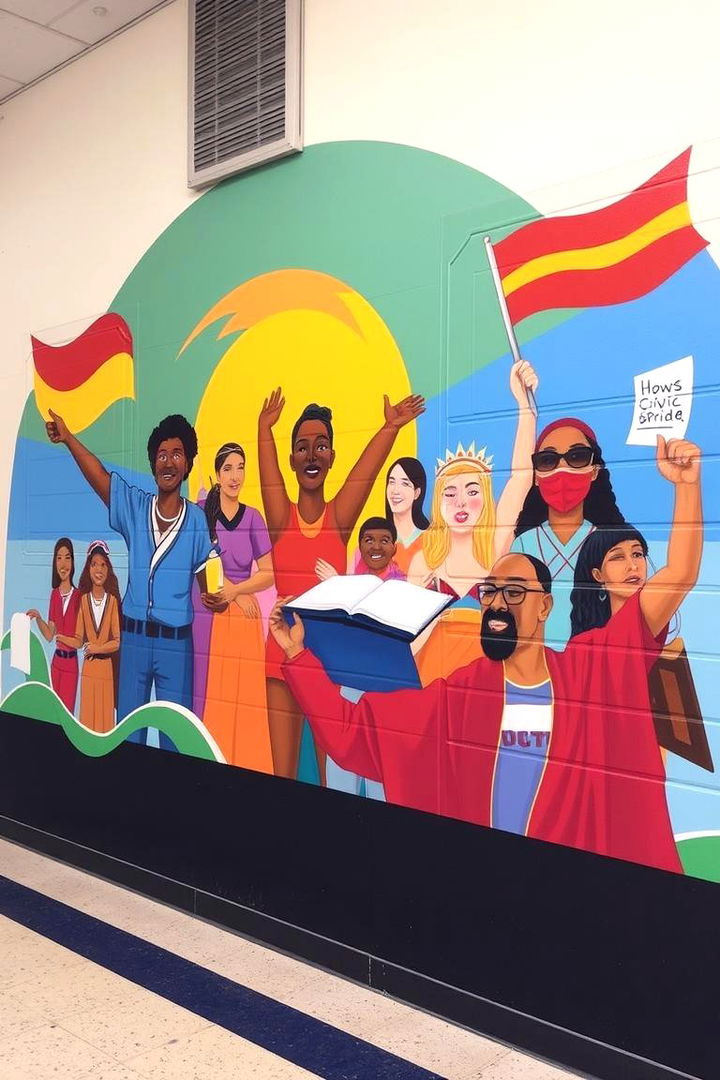
At the heart of many library murals lies a celebration of civic pride, where art transcends aesthetics to reflect community values. Bold designs and powerful motifs evoke shared memories and local achievements that resonate with residents. These visual expressions foster a collective identity and reinforce commitments to progress and unity. By articulating a sense of community through striking imagery, the murals remind us that every local story matters. This celebration of civic pride transforms libraries into communal spaces where art, history, and shared hope coexist, encouraging individuals to take pride in their surroundings and nurture a sense of belonging among neighbors.
19. Fostering Local Talent
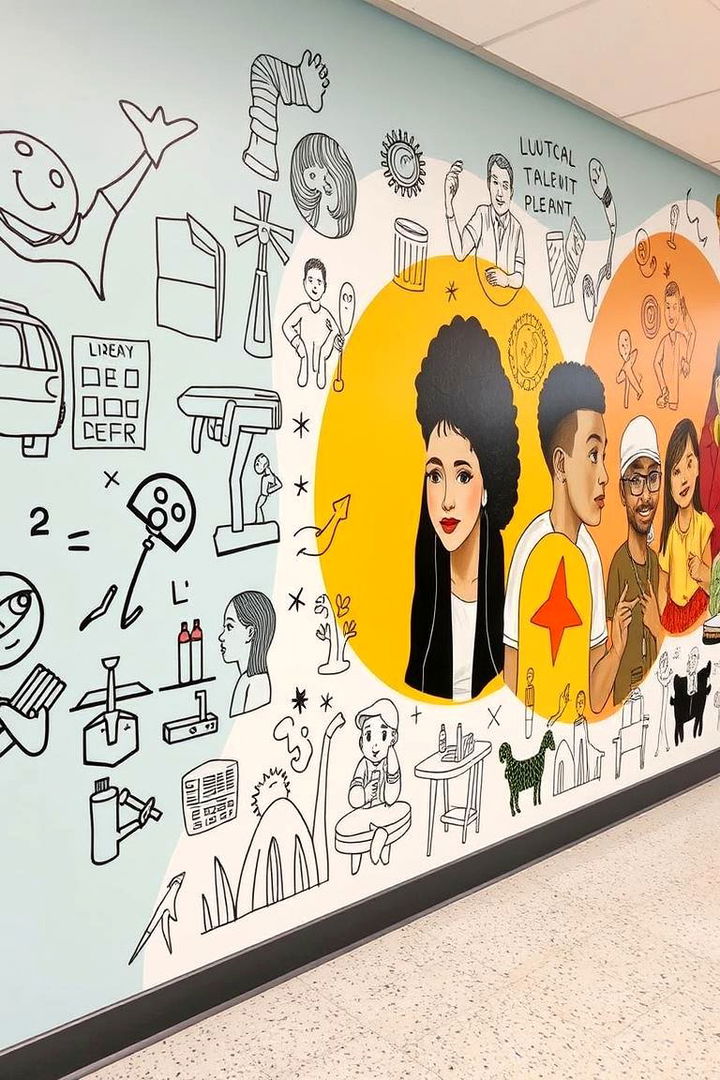
Notably, embracing the creative contributions of local artists is at the core of many library mural projects. These murals provide a platform for emerging talent to showcase their unique perspectives and technical skills. With a clear focus on regional artistic voices, the murals enrich the cultural landscape and serve as inspirational milestones for aspiring creators. By offering opportunities for collaboration and public display, libraries become incubators of innovation and creative growth. Such initiatives help elevate local talent while fostering a vibrant community where art is celebrated and nurtured through mutual support and shared creative vision.
20. Advocating Inclusive Creativity
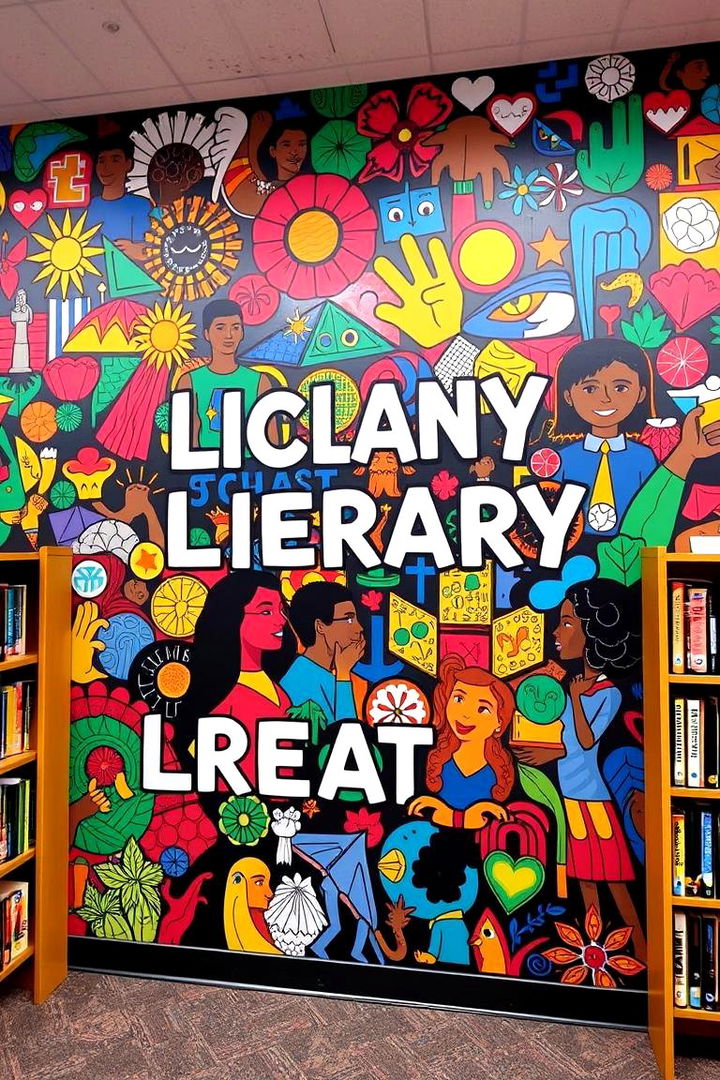
One of the most compelling aspects of library murals is their role in advocating for inclusive creativity. Embracing diverse art styles, cultural backgrounds, and community narratives, these murals challenge conventional boundaries. By incorporating a mosaic of artistic influences, they provide a welcoming space for citizens to express their stories and identity. This inclusive approach not only celebrates individual differences but also unites communities through a shared visual language. The result is a dynamic public display that fosters empathy, dialogue, and creative freedom, ultimately transforming libraries into multilingual canvases of hope and intercultural exchange.
21. Offering Educational Insights
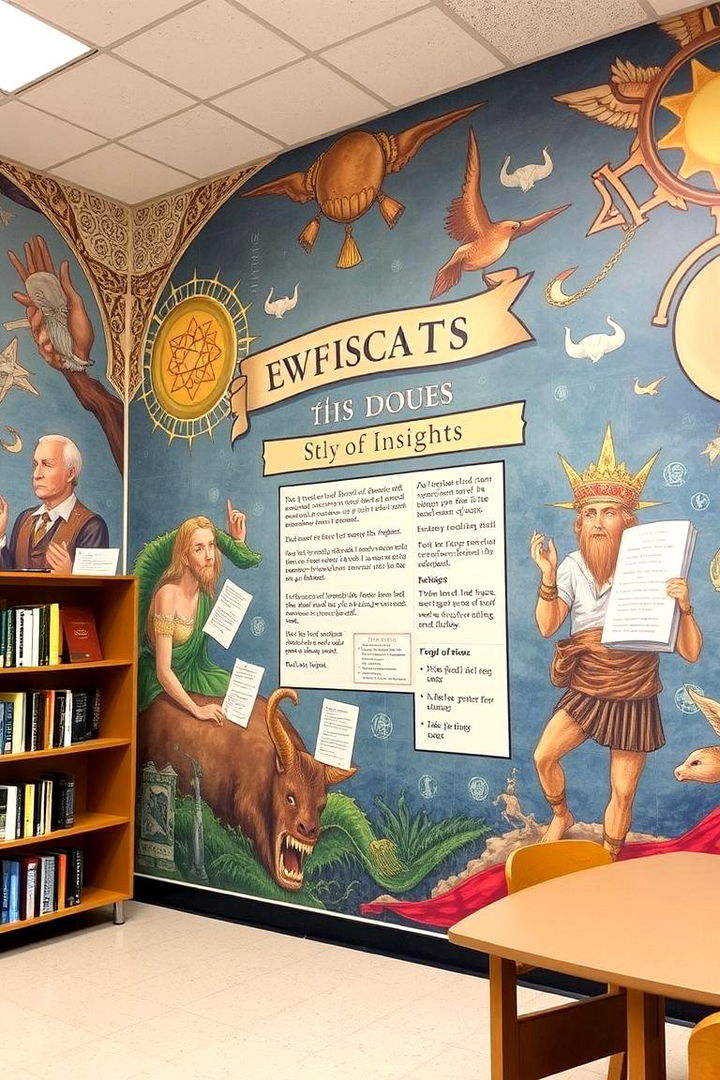
Aside from captivating visuals, library murals also offer educational insights that provoke thought and curiosity. Each mural is imbued with symbolic imagery and hidden messages that invite viewers to delve deeper into cultural, historical, and literary themes. These artistic installations double as informal lesson plans, sparking conversations about art history, symbolism, and local narratives. The murals serve as both decorative elements and educational tools, making libraries vibrant centers of learning and creativity. By carefully selecting themes and details, these works encourage viewers to question, learn, and celebrate the intersection of art and education.
22. Celebrating Local Legends
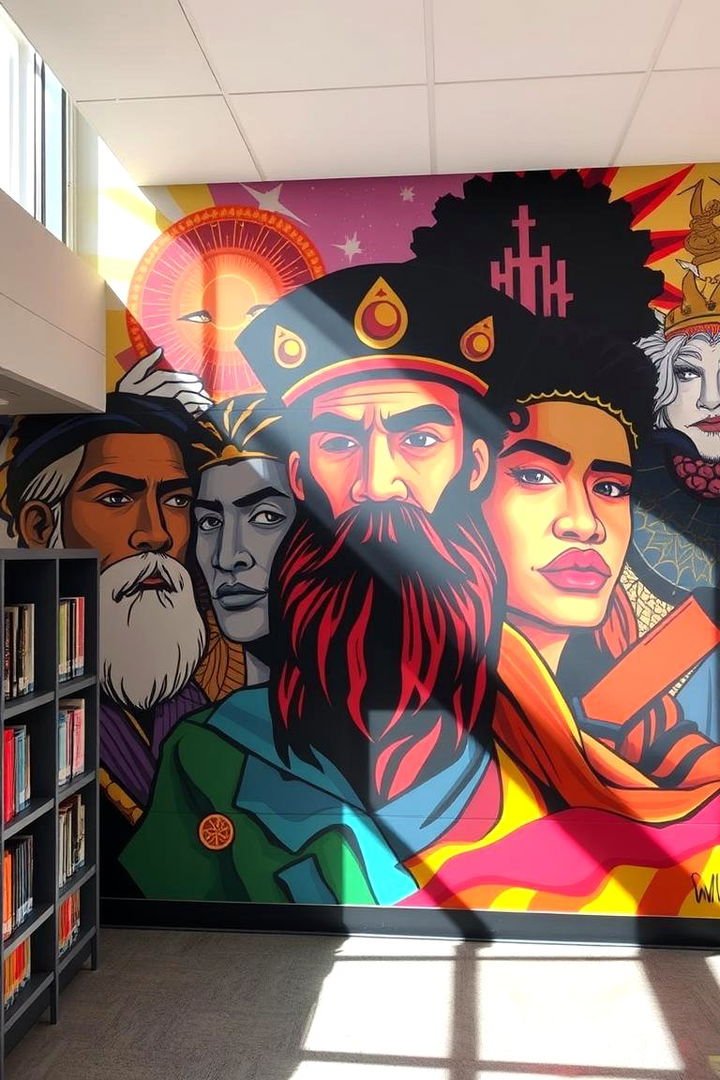
Finally, the celebration of local legends is vividly reflected in murals that immortalize iconic figures and folklore in libraries. These artworks capture the essence of celebrated local characters, weaving myth and reality into a seamless narrative. Through a mix of traditional portraiture and imaginative symbolism, the murals pay homage to community heroes and timeless legends. They invite residents to relive inspiring tales and feel connected to the rich cultural tapestry of the area. By celebrating these local legends, the murals help preserve significant stories while inspiring future generations to honor their heritage with pride and creativity.
Conclusion:
The journey through 22 Library Murals reveals the transformative power of art in public spaces. Each mural not only beautifies the library but also educates, connects, and inspires communities through historical insights and creative expression. These artworks bridge the gap between tradition and modernity, inviting viewers to explore cultural heritage, foster dialogue, and celebrate local talent. Rich in symbolism and crafted with care, the murals serve as beacons of community pride and educational inspiration that elevate learning and artistic exploration.
